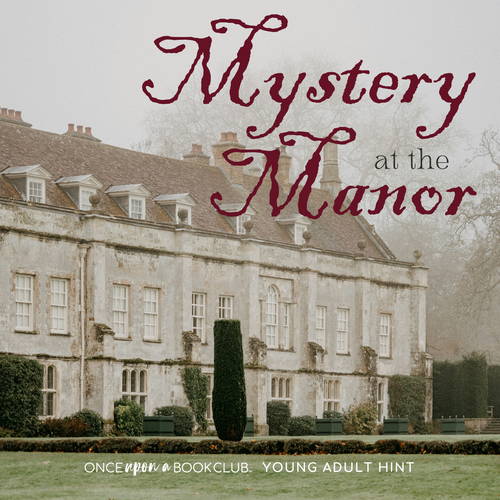From Memories to Memoirs: Writing Your Life Story

We’ve all heard the phrase, “A picture is worth 1000 words”, and in that case, my phone contains a massive library. With the invention of smartphones, we can easily capture our daily lives and those special moments on our phones, and it’s always wonderful to look back through our galleries.
But nothing beats the art of preserving memories through writing. It is the story behind those images that need to be told. There is something quite wonderful about hearing stories about your parents' and grandparents' lives. These stories are a rich combination of experiences, emotions, and wisdom that, if left untold, will be buried in time.
Writing your memoirs is not just about recording events; it’s about capturing your journey. Not only can you offer valuable insights into your life, but perhaps most importantly, it is a time for reflection and self-discovery.
Why Write Your Memoirs?
We often think that our personal stories aren’t important enough to write down, and what is the point? But we need to remember that each of our stories is unique. Each one is filled with trials and tribulations, personal triumphs, laughter and tears. Your memoir can be the start of a family legacy; it is a gift that you can leave to your children. It is a wonderful way to share your wisdom through personal anecdotes, preserve your family history, and look back at all you have achieved and overcome.

Getting Started: Organizing Your Memories
Here at Once Upon a Book Club, we are all about bringing books to life, and now is the time to bring your personal story to life. We know that the prospect of writing your life story can feel daunting and overwhelming. Where do you start? How do you sift through years of memories and decide what to include? But just like anything in life, you just need to take that first step,
Here are some ideas to help you organize your thoughts and get you started.
Reflect and List
We think it's always a great idea to begin with a bit of reflection. Set aside some quiet time to think about the key moments in your life—both big and small. Make a list of these moments, categorizing them into themes, if possible, such as family, work, love, and challenges. For those of you who are more visual, this is the perfect opportunity to get creative. Grab some sheets of paper and start mind maps, including photos, personal letters, notes, etc.
Use Prompts
We all get writer’s block and if you're stuck, use prompts to jog your memory. Questions always get us thinking!
- Where did I grow up?
- What was my happiest childhood memory?
- What challenges did I overcome and how?
- What were my dreams?
- What was life like when I was growing up/a young adult, etc
- How did I meet my partner?
The options are endless, and using prompts can unlock a flood of memories and allow you to start writing in no time.
Create a Timeline
A chronological approach is always a great way to help you organize your thoughts. Creating a timeline of your life is an easy way to mark significant events, periods of change, and pivotal moments. Divide your life into decades and look back at the highlights and challenges for those periods.

Adding Depth: The Emotional Journey
Your memoir should be more than just a list of events. Our lives are an emotional journey that captivates readers. Adding depth to your storytelling is key.
Be Honest
Honesty brings authenticity to your memoirs, and by sharing your feelings, you make your story relatable. It's not just about the events—it’s about how you felt, the doubts you had, the mistakes you made, and what you learned from them.
Include Details
Details bring your story to life. Take the time to describe the settings, the people involved, and the emotions you felt. These details will help whoever reads your memoirs to visualize and connect with your experiences. Creating that connection is what makes any story successful.
Show, Don’t Tell
We are so fortunate to have easy access to technology, and it is super easy to add pictures and personal letters to your story. These personal touches are like adding our surprise gifts. Your children or grandchildren will love seeing pictures of you as a teenager or young adult. It’s time to grab your memory box and weave them into your story. It will go a long way to making it personal and interesting. Yes, now is the perfect time to bring out that first Valentine's card or love letter you received!

Weaving a Compelling Narrative
A compelling narrative is what transforms a collection of memories into a story that everyone wants to read. That may sound so formal and intimidating but the best way to write a compelling narrative is to write in your own style, tell your story through your personality. Be yourself!
Here are tips to enhance your storytelling:
Find Your Theme
Identifying themes or lessons in your life may be what ties your experiences together. This can be the focal point of your memoir. Remember, this is your story, and you can write it in any way you want.
Include Characters
People play a significant role in our lives, and each person we have a relationship with adds something to our lives; they influence us in one way or another. This is a wonderful time to look back at the characters in your story, from family and friends to mentors. This can even end up being a chapter on its own—the people who influenced you and shaped your life.
Build Tension and Resolve
Every good story has moments of tension. Including the challenges you faced, the emotions and how you overcame them really shows who you are. And besides, who doesn’t like a bit of drama?

Tips for Staying Motivated
Writing your memoir is a marathon, not a sprint. Rome wasn’t built in a day! Here are some tips to keep you motivated:
Set Small Goals
We find that breaking down the writing process into smaller manageable goals is definitely the way to go. Perhaps it's writing a certain number of words each day or completing a chapter by a specific date; small goals make the task less daunting.
Create a Writing Routine
Just like we tell our kids, set aside regular time for writing. A routine can help you stay on track—think of it as your personal growth time. It is also a great excuse to set up a writing station where you can pin up your visual boards, post-it notes, photographs, etc. And if you’re like us, bookish stationery is in abundance.
Preserving Your Legacy
Once you’ve completed your memoir, you will need to think about how you would like to share it. You can go leaping ahead and publish it—there are plenty of self-publishing platforms to choose from. Or perhaps you want it to be a personal keepsake for your family, in which case printing it out and binding it is a wonderful way to preserve your legacy.
You can also create an online blog or even a digital book so that your family and friends can easily access your life story no matter where they are.
Conclusion
Writing your life story is a journey of introspection, healing, and legacy-building. It’s a way to preserve your memories, share your wisdom, and connect with future generations on a deeply personal level.
Your memoirs are not just a record of what happened; they are the story of the life you’ve lived, the challenges you’ve overcome, and the love you’ve shared.
Remember, the act of writing your memoirs is a gift—a gift to yourself as much as it is to your family and friends. Happy writing! We can’t wait to hear how you all are doing! Perhaps you will even share a chapter or two with us.
Even the most ardent writer needs a break, and we have the perfect book boxes for that much-needed downtime! Why not try our “Weird and the Wonderful” box featuring Circus of Wonders by Elizabeth Macneal, or our “Within the Garden Walls” box, featuring Under the Tamarind Tree by Nigar Alam. And let’s not forget our “Steer Your Own Dreams” book box, featuring a special edition of Love of My Lives by Yamile Saied Mendez.














Leave a comment